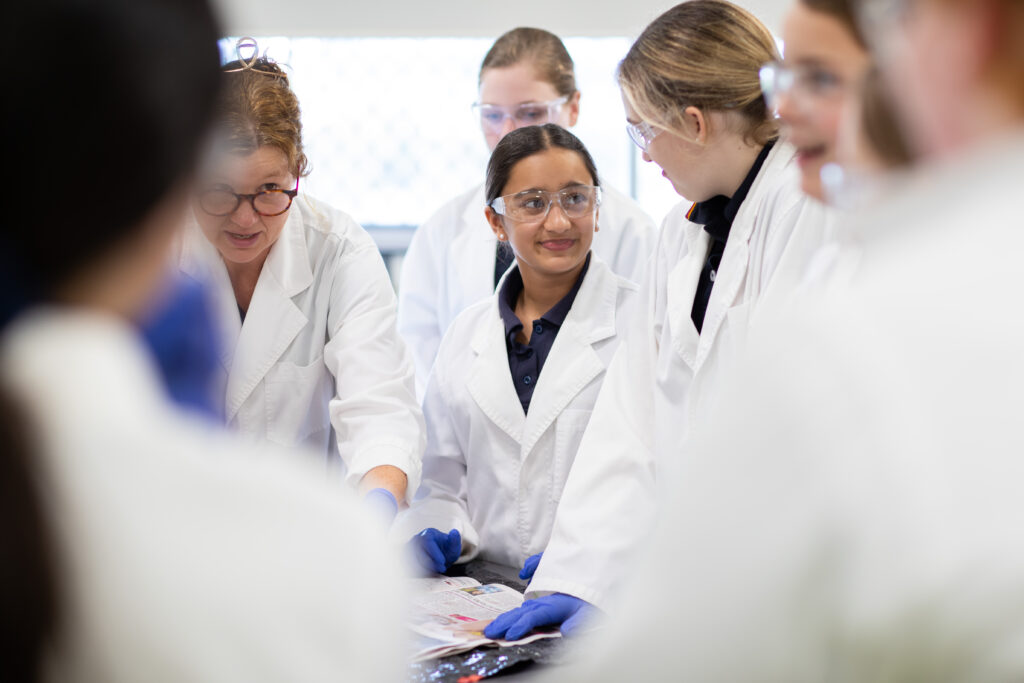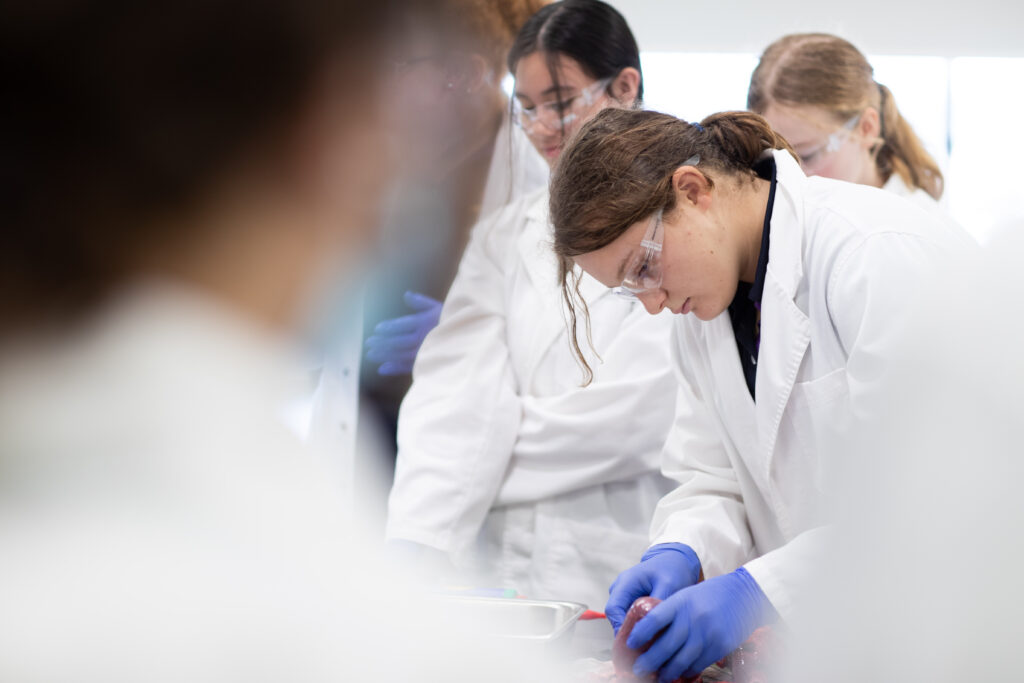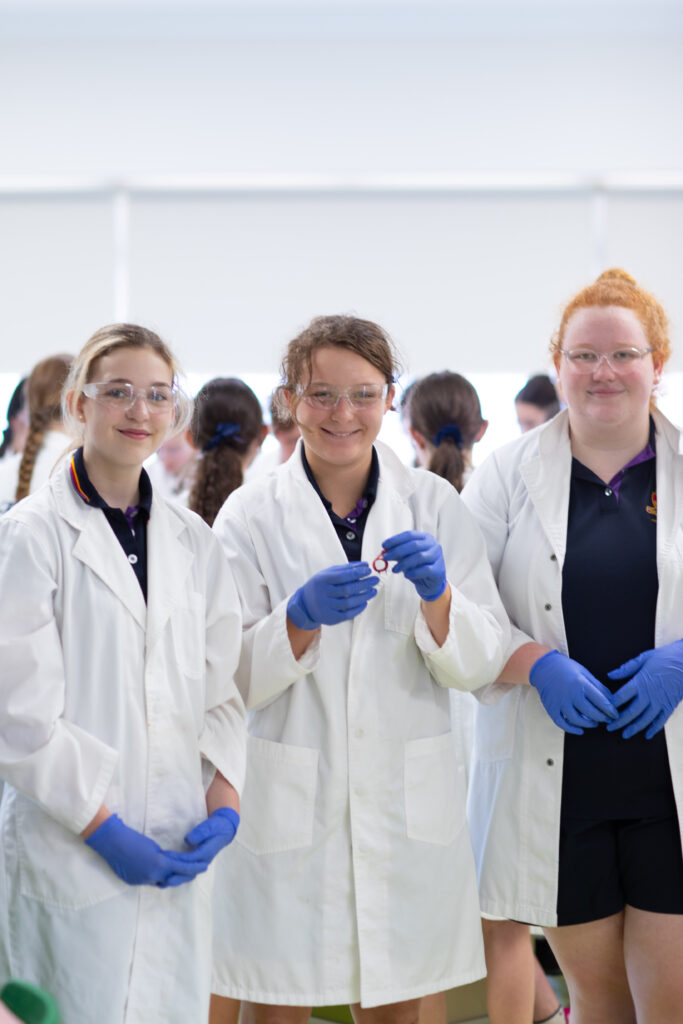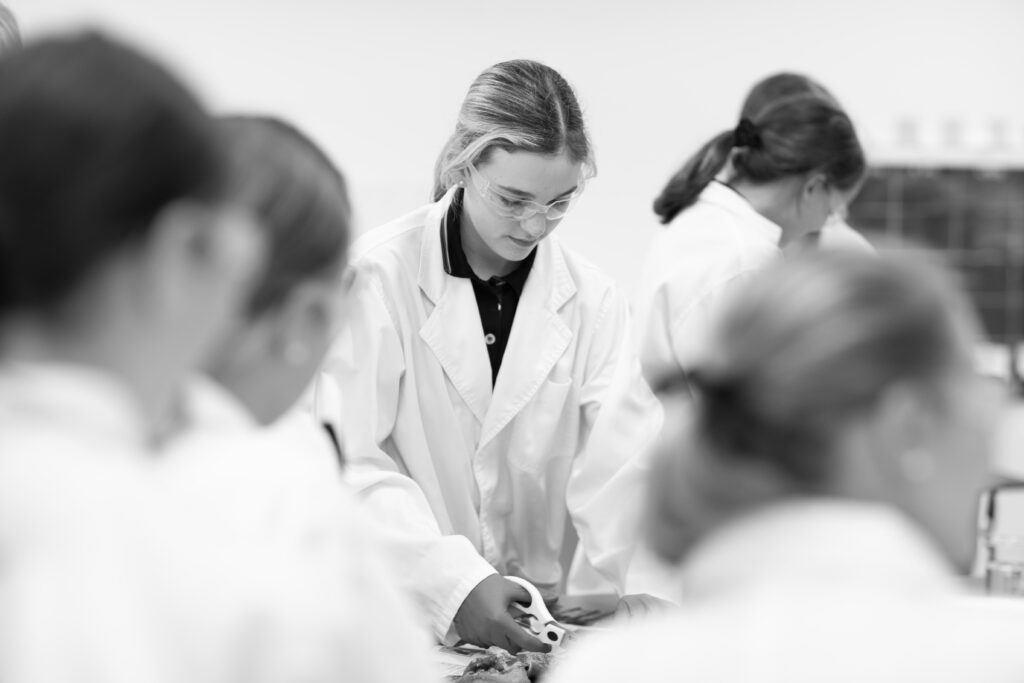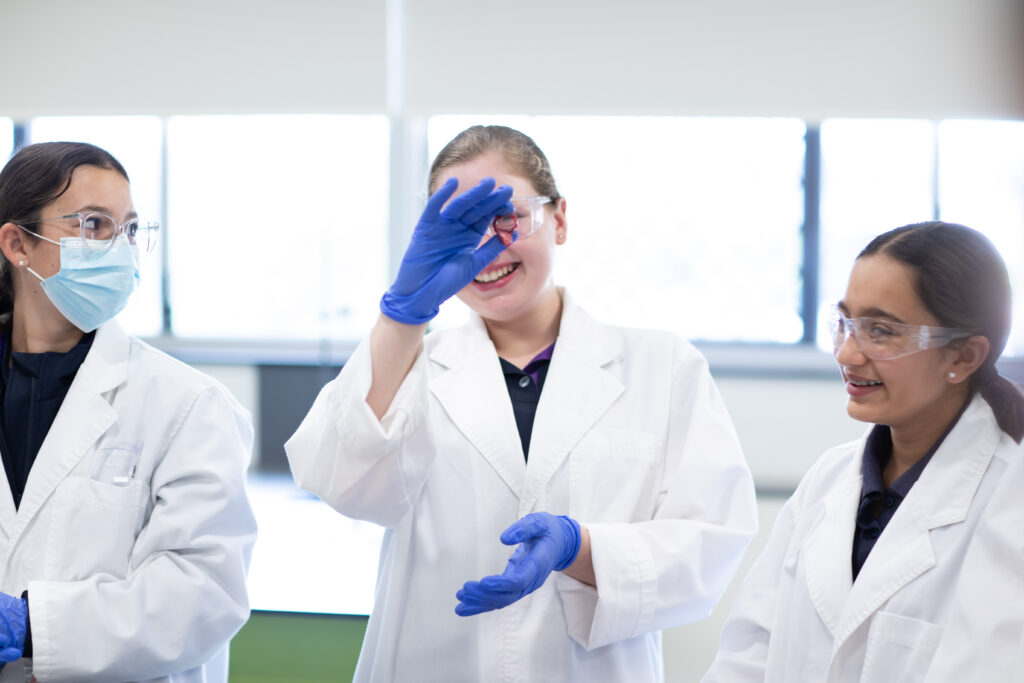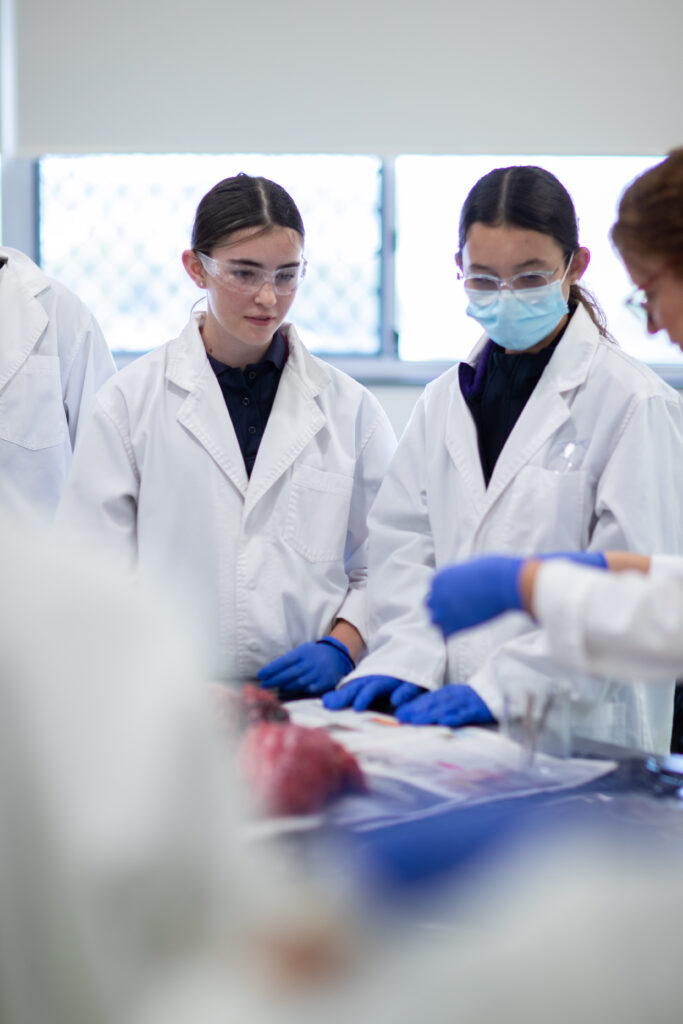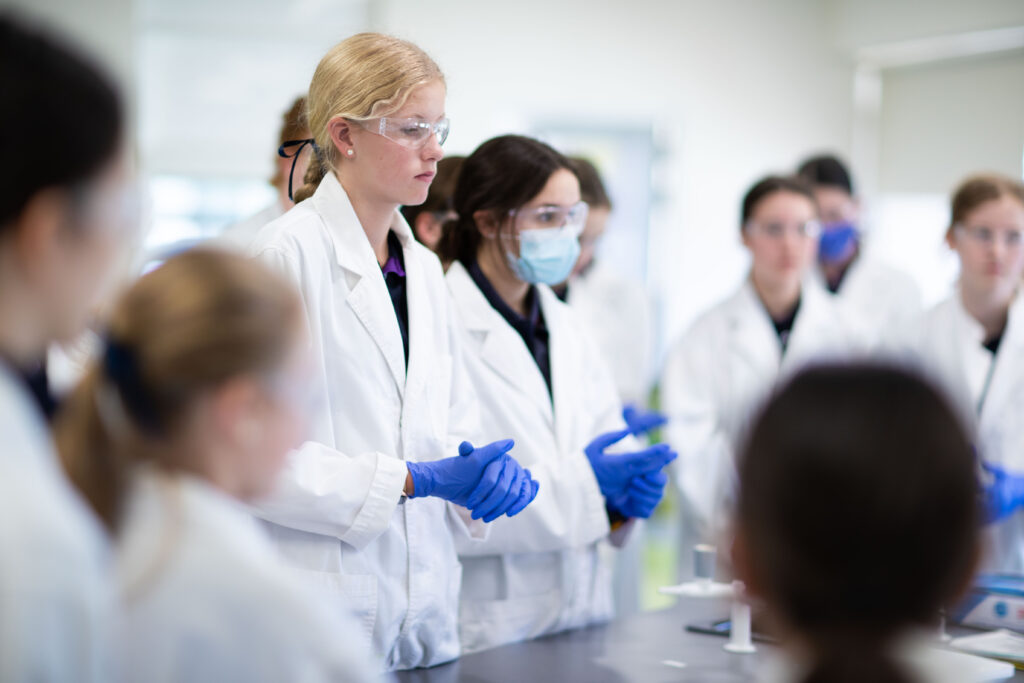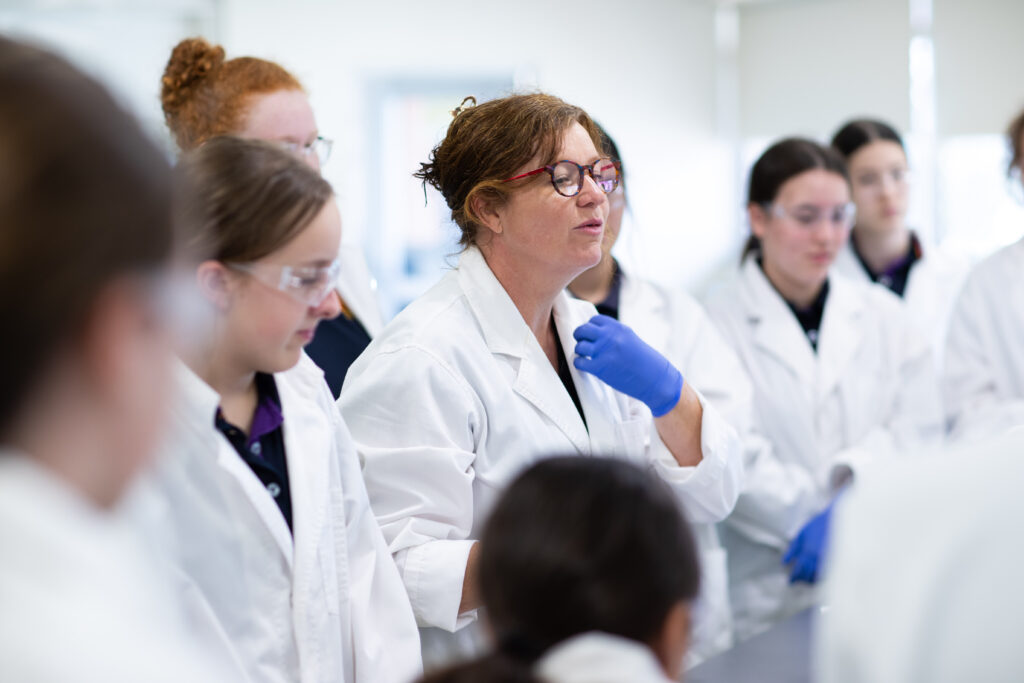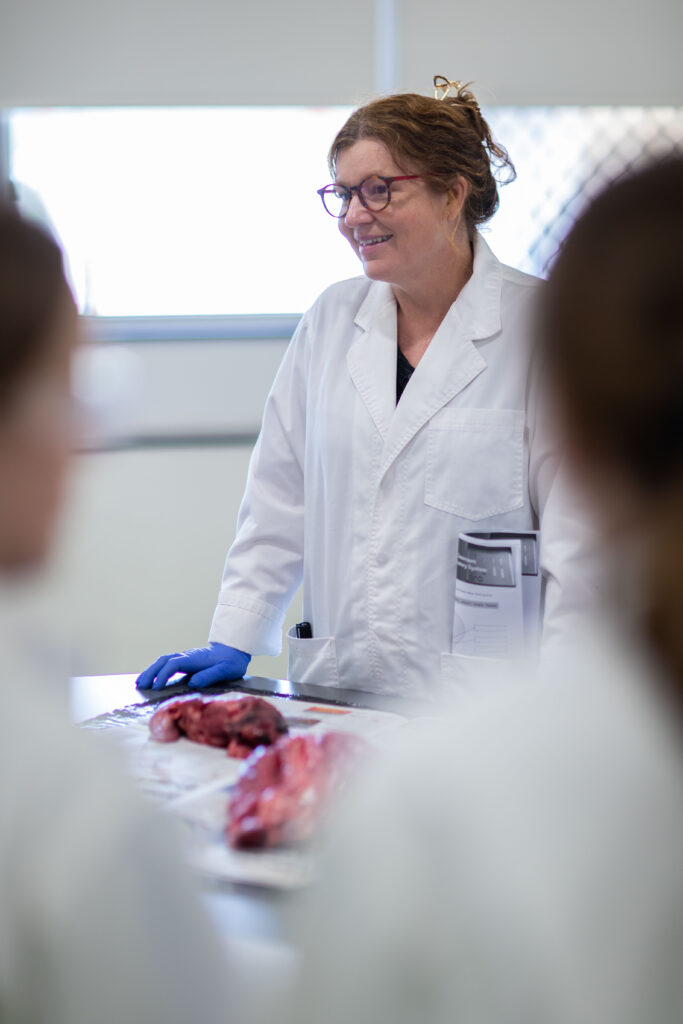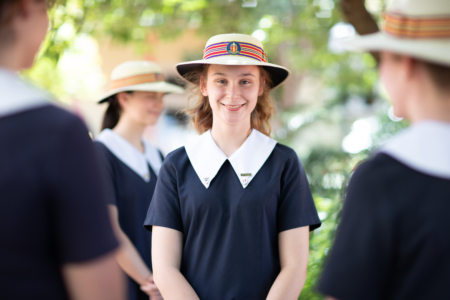You wouldn’t have to travel further than the Glennie Science block to get a clear understanding as to why girls love science, and why so many Glennie graduates go on to study science and medicine after school.
With lab coats on, and goggles firmly fitted, this Year 8 science class is ready for some hands-on learning.
Under the watchful eyes of science teacher, Mrs Fiona Stone all of the girls were given the opportunity to learn more about the respiratory system. Mrs Stone mentioned ‘Today the girls are dissecting parts of the respiratory and digestive system’.
‘We have been studying biology all term, and we commenced our lessons by learning about how cells come together to form tissue. As the school term progressed, the girls developed an understanding of how tissue comes together to form organs, organ systems, and organisms. The main area of focus for the students has been the respiratory system’.
Year 8 students, Lindsay, Annie, and Jess have all enjoyed the hands-on learning, with Lindsay mentioning ‘We learned how to dissect the respiratory system and how the trachea connects and works with the lungs’.
‘It was also really interesting to see the inner workings of the diaphragm, and how it folds downwards when you breathe in. This contraction creates a vacuum, which allows us to breathe in air.’
‘The girls will absorb far more information through hands-on learning. Teenagers often learn through their bodies; then their hands; then their minds, in that order’
MRs STONE
Mrs Stone believes strongly in the importance and sees numerous benefits from the girls experiencing classes like today.
‘The girls will absorb far more information through hands-on learning. Teenagers often learn through their bodies; then their hands; then their minds, in that order’.
‘Today is a prime example of them engaging with their learning. You can see them taking in the information, their inquisitive nature is sparked through this form of experiment and the girls will gain invaluable knowledge and understanding of this area of study’.
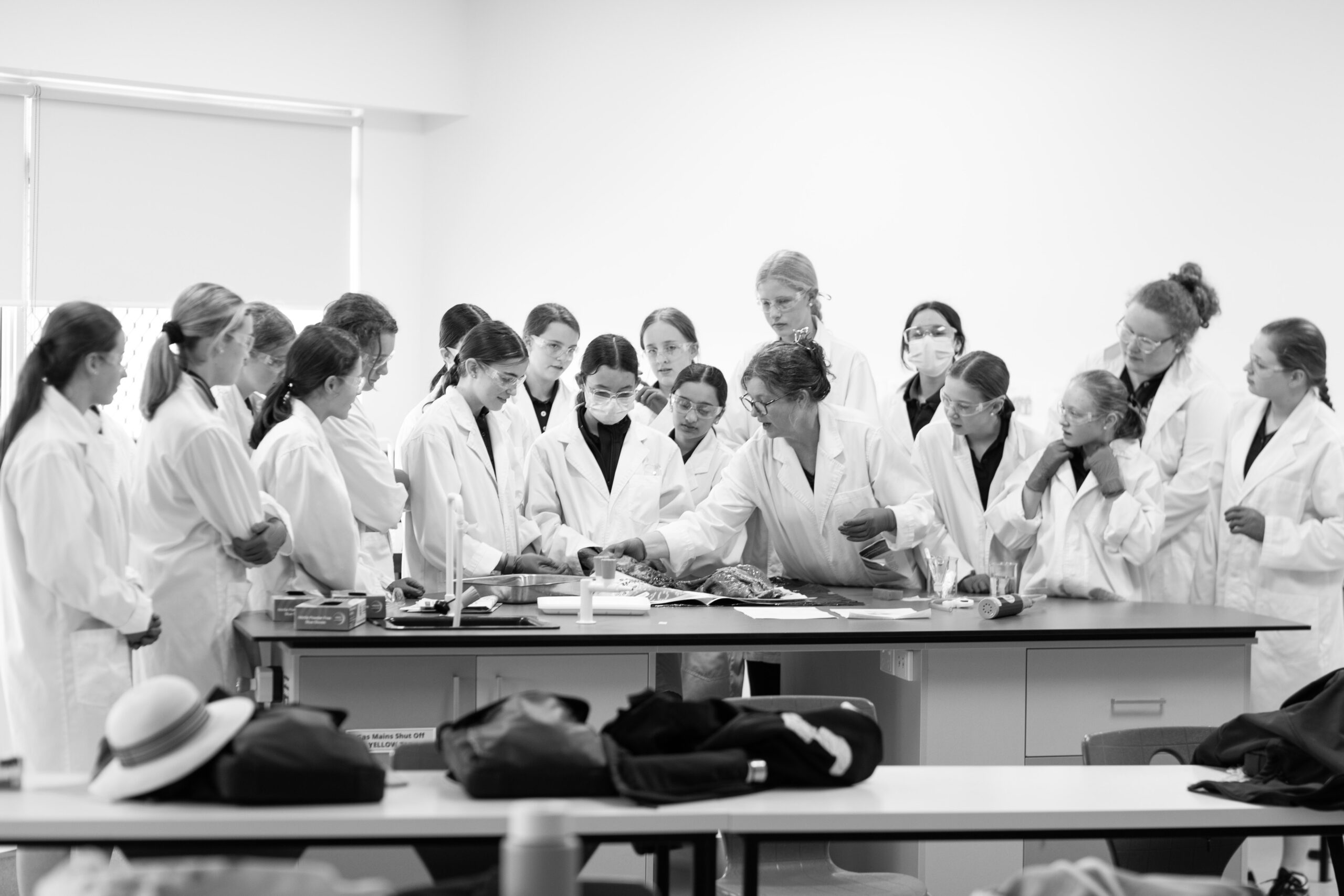
It appears that Jess is a huge supporter of interacting with her learning in class ‘Today I learned the necessity for the diaphragm and its direct correlation with allowing us to breathe and survive’.
‘By being able to see the orans, and being able to physically interact with the learning rather than purely through a textbook, I think I will retain more of the information that I learned in today’s lesson’.
Even just through seeing the organs in front of them, Annie had learned a number of things that she wasn’t aware of just half an hour earlier. ‘ I knew that the heart is a muscle, but I didn’t know that the diaphragm was so transparent’.
Although it is just one lesson today, it is clear to see why science continues to spark the imagination and interest of so many Glennie girls.
